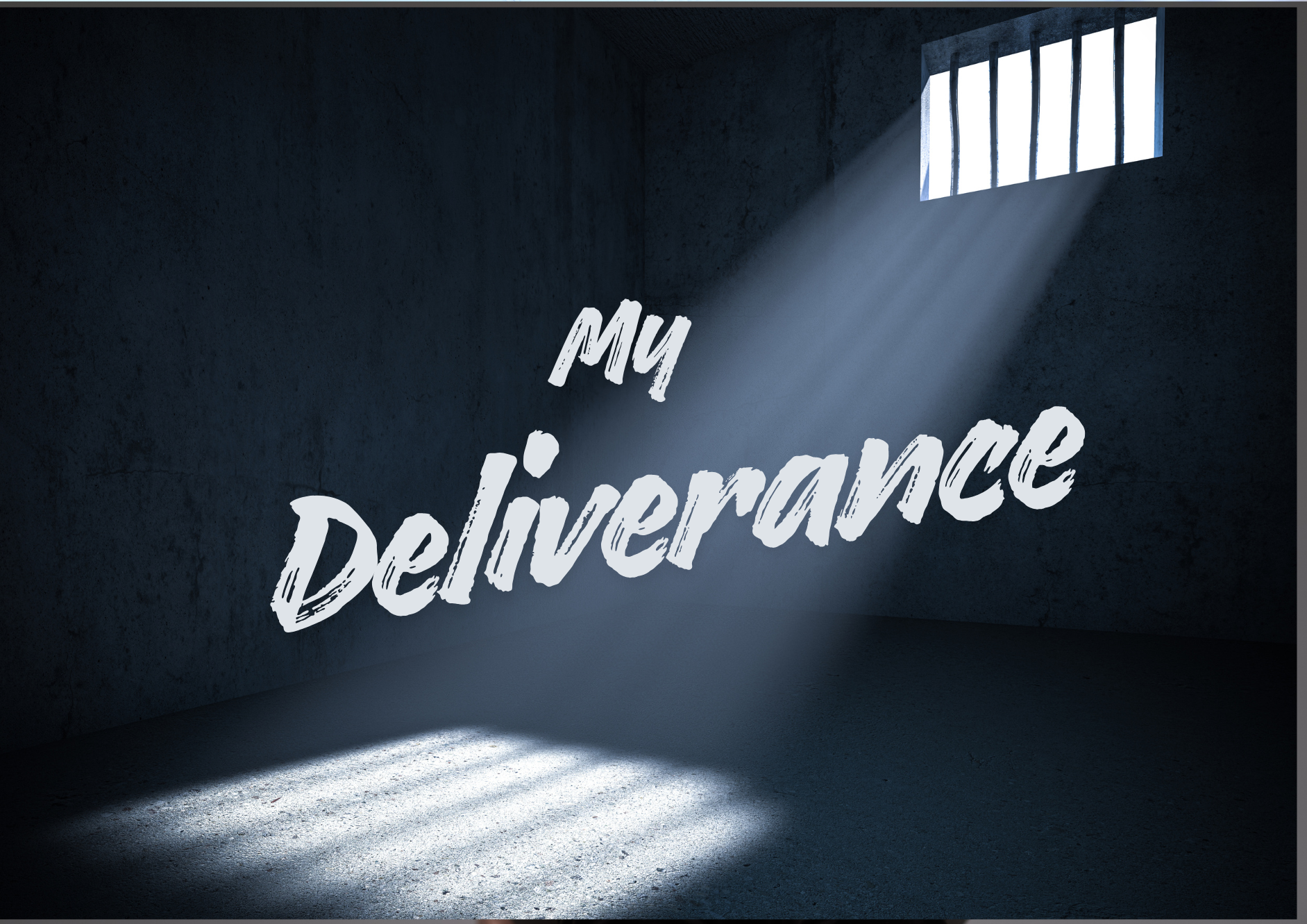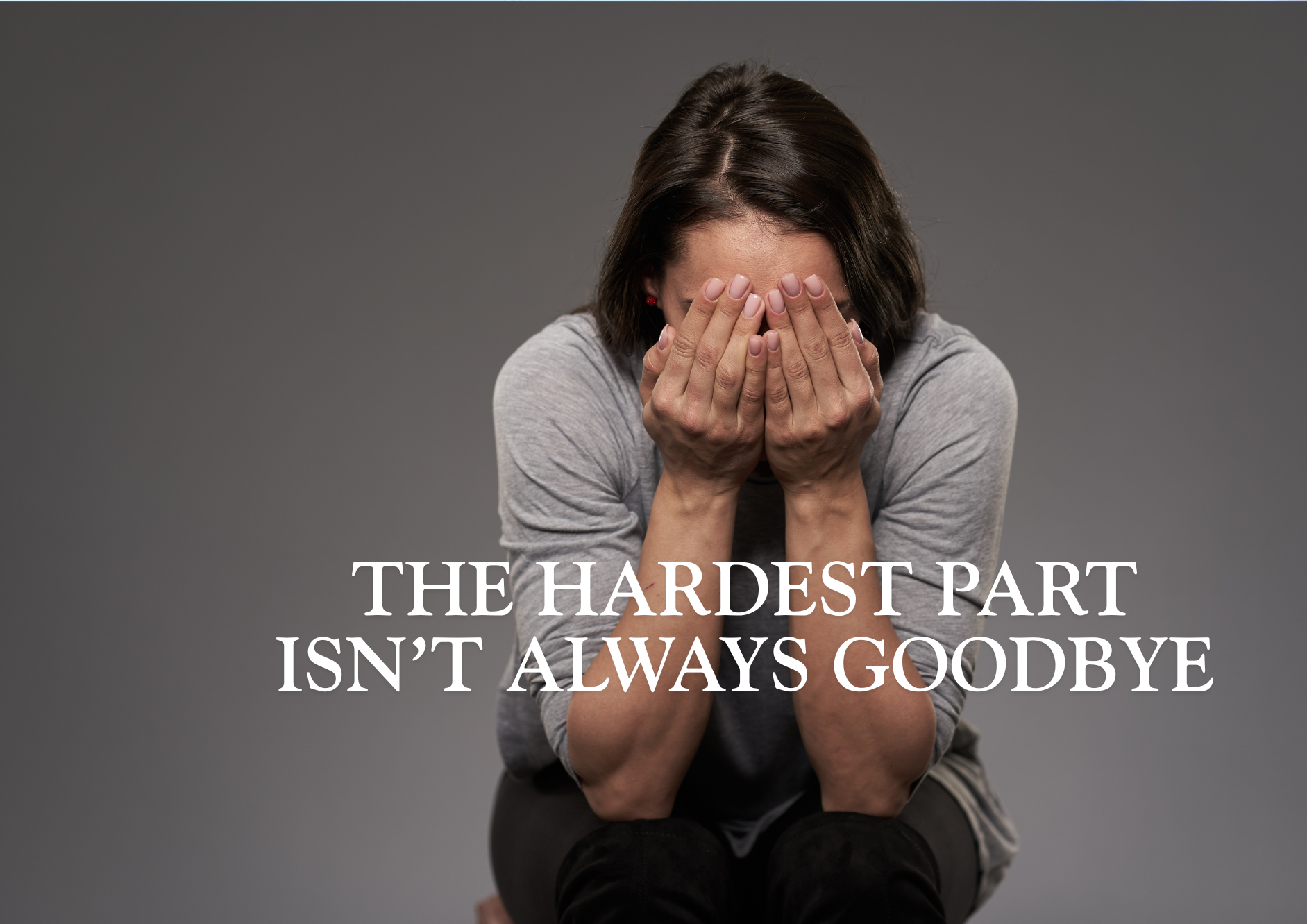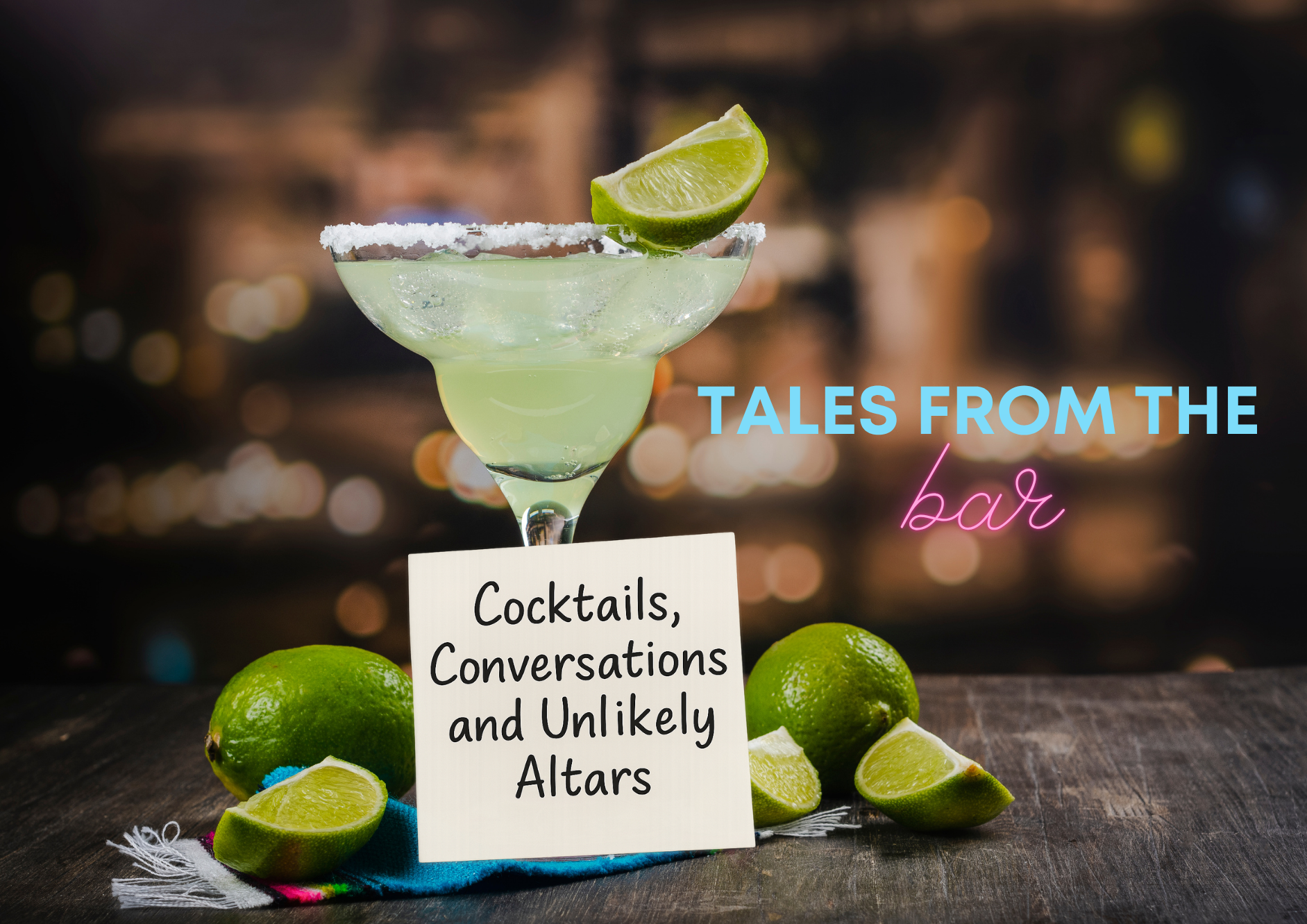The Margarita
Salted with Tears, Sweetened with Joy
True confession: when I bartended my way through college, I hated cleaning the frozen margarita machine. Hated it. Sticky, messy, impossible to get right. I used to slip the busboy an extra tip just so he’d clean it for me. Maybe that’s why to this day I still don’t care much for frozen margaritas.
But even beyond that, it took me a long time before I’d drink a Margarita at all — even on the rocks. Too many painful memories of the bar. Too many nights when the clink of glasses was covering up loneliness, or when laughter at the counter didn’t quite reach the heart.
And then there were the Wednesday nights. At one bar I worked, it was “upside-down margarita night.” Ugh. Messy, noisy, and honestly, kind of humiliating. Tips usually sucked. Maybe that’s part of why the Margarita carried more sting than sweetness for me.
So for me, the Margarita isn’t just about refreshment — it’s about redemption.
A Margarita on the rocks, with a salted rim and freshly squeezed limes, became something different. Something honest. A reminder that joy can be real, not forced. That sweetness can hold its own, even alongside the sour. That salt doesn’t have to ruin the glass, but can frame it.
Because the Margarita isn’t just a party drink — it’s a paradox in a glass. Sweet and sour. Joy and sting. Celebration rimmed with salt. It’s laughter with friends while tears are still fresh. It’s the reminder that life doesn’t come to us neat and tidy, but mixed — with both the ache and the joy in the same moment.
I think about that every time I hear the phrase “Celebration of Life.” That’s what we used to call funerals. And I’ll be honest — I chuckle to myself whenever I read that title. Because the truth is, very few people are celebrating in those moments. There are still plenty of tears, because someone we love is no longer with us.
When my mom died, and later my stepdad, in many ways it was a blessing. They had both been sick for a while, and I was grateful their suffering was over. But did I celebrate? No. It was sad in so many ways. There were tears and stories and laughter, yes — but celebration? That word didn’t quite fit.
I see it often when I lead funerals. Laughter breaks out as the stories are shared, as we remember the quirks, the good times, the little moments that made someone who they were. And then, just as quickly, the tears come. Because those same memories remind us there’s now an empty seat where they once sat, a silence where their voice used to be.
It’s both at once — laughter and tears, sweetness and salt. And maybe that’s what the Margarita reminds us: life is mixed. You can’t sip only the sweet and ignore the sting. You take them together. And when you do, you discover even the salt rimmed around the glass has its place.
Isn’t that life? Always both. The good and the bad, the sweet and the sour, the joy and the sadness. And if this were a country bar instead of a cocktail post, this is probably where someone would cue up Garth Brooks. Because he said it best in The Dance: “I could have missed the pain, but I’d have had to miss the dance.”
We don’t get one without the other. The tears prove the love was real. The ache shows us the joy was worth it. Grief, after all, is just love with nowhere to go.
Or, as Winnie the Pooh so simply put it: “How lucky I am to have something that makes saying goodbye so hard.”
May the salt on your lips remind you of the tears you’ve shed.
May the sweetness on your tongue remind you of the joy that still lingers.
May the stories you tell bring both laughter and ache —
and may you know that even in the mixture of grief and gratitude,
grace has a place at the table.
Bar Lore
Like many classic drinks, the Margarita’s exact origin is a little blurry. Some say it was first poured in Tijuana in the 1930s. Others claim it was invented for a Dallas socialite named Margarita. Another story points to Juárez in the 1940s. But what most agree on is this: it belongs to the “daisy” family of cocktails — a classic formula of spirit, citrus, and liqueur. In fact, “margarita” is Spanish for “daisy.”
From its hazy beginnings, the Margarita grew into a worldwide favorite. Today it’s one of the most popular cocktails in the U.S. — whether served frozen (God help the poor bartender cleaning that machine) or shaken fresh over ice.
Recipe: The Margarita
2 oz tequila (blanco or reposado)
1 oz Cointreau (or triple sec)
1 oz fresh lime juice
Salt rim (optional, but highly recommended)
Shake with ice, strain into a rocks glass with a salted rim. Garnish with lime.
Zero-proof option: swap in non-alcoholic tequila and orange liqueur alternatives with fresh lime.
A Note of Care:
If you’re in recovery, please know this post is never meant to romanticize alcohol or overlook its very real dangers. The sacred can be found in tea, water, coffee, or stillness just as surely as in a cocktail glass. If drinking brings harm rather than healing — to you or to those you love — may you feel zero shame and full freedom to find your altar elsewhere. What matters isn’t what’s in the glass, but what opens your heart.

I meant to share this last week for the Second Sunday of Advent — Peace — but maybe it landed right on time. Advent has a way of teaching us that God shows up even when we’re running behind. My Deliverance A Reminder That We Don’t Walk Through Anything Alone Paul is sitting in prison, chained to the floor, waiting to find out whether he’ll live or die — all for saying “Jesus is Lord” in a world where Caesar insisted on that title. He doesn’t know how the trial will go. He doesn’t know if he has weeks or hours. He doesn’t know if he’ll walk out free or be carried out. And yet he writes these impossible words: “And because of this, I rejoice… for I know that what has happened to me will turn out for my deliverance.” ( Philippians 1:18–19) Rejoice? Deliverance? Now? Paul isn’t delusional. He’s anchored. And there’s a difference. When Paul says, “This will turn out for my deliverance,” he’s quoting Job — the sufferer who stood in the rubble of his life and still said, “Though He slay me, yet will I trust Him.” And honestly, I understand that move. You see, there are days when I can’t find the right words to pray. I start, stop, stare at the ceiling… and nothing comes out the way I mean it. On those days, I borrow someone else’s words. Sometimes it’s Niebuhr and his Serenity Prayer — that quiet nudge to accept what is and release what isn’t mine to carry. Then there are days I borrow from St. Francis, asking God to make him an instrument of peace when everything inside me feels anything but peaceful. Many times, I turn to Mother Teresa — who heard Jesus whisper, “Come be my light,” and responded with a simple, steady, “I will never refuse you.” She promised to “do something beautiful for God” and spent her life carrying a small flame into the darkest places on earth. On the days when my own light flickers, I borrow a little of hers. And often, it’s St. Patrick’s Breastplate — my favorite. That long, old prayer that wraps Christ around you like armor: Christ before me, Christ behind me, Christ beneath me, Christ above me… A reminder that deliverance doesn’t always remove the danger, but it does surround you with Presence. When my voice shakes, I lean on theirs. Their prayers steady me when my own run out. It isn’t cheating. It’s community — across generations and stories. That’s exactly what Paul is doing: borrowing strength from saints before him until he can feel his own again. When Paul talks about deliverance, he uses the word soteria — but he doesn’t mean escape. He isn’t saying: “Don’t worry — I’ll be home for dinner.” Or “These chains are about to fall off.” He knows deliverance might mean life but it also might mean death. What he is saying is: “Whatever happens, I will stay true. My hands will be clean. My heart will be steady. I won’t lose myself.” That’s deliverance. Faithfulness that survives circumstances. He refuses to let despair be his narrator. He refuses to say something he’ll regret just because he’s tired and afraid. That is its own kind of freedom. Paul is quite clear how he will make it: “Through your prayers and the help of the Spirit of Jesus Christ.” If he runs out of strength, someone else’s strength will carry him. If he runs out of hope, someone else’s hope will cover the bill. This is Paul’s theology of community: none of us gets through anything alone. Imagine if we lived that way. It would change everything. That reminds me of what Advent Peace is all about. Advent Peace isn’t calm circumstances or a detour around uncertainty. It’s Christ-with-us — the Presence that keeps your heart from unraveling even when your world is. Paul isn’t peaceful because prison is comfortable. He’s peaceful because he isn’t alone. And that is Advent’s promise. Not escape. Something better – Presence. Maybe the Unlikely Altar this week isn’t a manger or a star. Maybe it’s the prayers you borrow when your own run out. Maybe it’s the saints whose words help you breathe again. Maybe it’s the people whose strength carries you when yours is gone. Maybe deliverance isn’t being rescued — but being carried. And maybe the prayer Paul prayed from prison is the one Advent whispers to us again: “ This will turn out for my deliverance.” Not because the road is easy. Not because we’re strong. But because we are held.

Let me start with something honest and maybe a little surprising: I didn’t step into final expense because I wanted to sell anybody anything. If you know me — if you’ve sat beside me at a graveside or in a church pew — you already know that. For years, serving churches and now as a celebrant, I’ve stood with families in their most fragile hours. I’ve been in living rooms where grief and paperwork sat at the same table. I’ve seen tears that weren’t about death — but about cost. About decisions. About not knowing what mom or dad would have wanted. I’ve watched loved ones look at one another and whisper the questions no one ever wants to ask: "How do we pay for this?" " Who has the money?" "What do we do now?" The hardest part about death isn’t always the goodbye — Sometimes it’s the weight left behind. And that weight — when carried by the people left behind — can be heavy. Final expense insurance isn’t really about funerals or policies or paperwork. It’s about relief. It’s about compassion with a plan. It’s about love — still speaking long after the voice is gone. I’m not a big company. I don’t read from a script. I don’t do pressure or fear tactics. It’s just me — one human being who has watched this play out more times than I can count. And I’ve seen the difference a plan makes. I’ve watched families breathe easier because arrangements were handled and decisions were clear. I’ve seen tears of gratitude instead of panic. I’ve seen love carry forward — quietly, gently, faithfully — because someone cared enough to prepare. And here’s something I’ve learned: most people want to plan — they just don’t know where to begin. You don’t have to make every decision today. You don’t need a file cabinet or a color-coded binder. You just need a first step. A conversation. A plan that whispers to your family one day: “You’re not alone in this. I took care of you.” That’s what preparation does — it lifts the weight before it lands. That is why I do this work. So let me be clear: I’m not selling final expense insurance. I’m offering peace of mind. I’m offering dignity. I’m offering love — prepared, thoughtful, lasting. I know these conversations aren’t always comfortable. Death rarely is. But neither is leaving our people with a burden they never asked for. If you want to talk about a way to make those hardest days softer — no pressure, no pitch, just two humans talking about legacy and kindness — I’m here. We can explore options. We can ask honest questions. We can plan ahead with courage, tenderness, and hope. Because the way we leave matters. Not in dollars. But in love.

Let’s be honest. Nobody wakes up in the morning thinking, “ You know what I really want to talk about today? My funeral.” It’s not exactly coffee-and-donuts conversation. But here’s the truth: every one of us will eventually reach that moment, and when it comes, somebody has to deal with the details—and the bills. I’m not a big company with a fancy call center or a script that gets recycled from one family to the next. It’s just me—one person, on the phone, talking about something that really matters. And here’s what I’ve learned in my years of walking with families: t he hardest grief isn’t just about losing someone you love, it’s about losing them and being left with unexpected financial stress on top of the heartbreak. That’s why I do what I do. Final expense insurance, sometimes called burial insurance, is simple. It’s not about leaving behind a pile of paperwork or a big confusing policy. It’s about making sure the people you love aren’t scrambling when you’re gone. The average funeral these days costs between $7,000 and $12,000—sometimes more. That’s a lot of money to come up with quickly, especially when emotions are raw. Without a plan, families often have to dip into savings, pull out credit cards, or pass the hat. I’ve seen it happen. And I’ve seen the relief on people’s faces when they realize they don’t have to put their loved ones through that. Think of final expense insurance as your last love letter. It says: I thought of you. I planned for you. I don’t want my leaving to mean stress for you. To me, that’s not just insurance—that’s legacy. Now, I know talking about this can feel awkward. Some people joke, “I’m not planning to die anytime soon!” and I always smile and say, “Well, me neither—but the truth is, none of us get to schedule that.” Humor helps, but compassion carries us through. My promise to you is that our conversations will always be straightforward, respectful, and never pushy. I’ll answer your questions, explain your options, and help you find a plan that fits your life and your budget. This isn’t just business for me—it’s personal. I’ve seen families struggle, and I’ve seen families breathe easier because someone they loved made a wise choice ahead of time. I want your story to be the second kind. When the day comes, your family should be able to focus on what really matters: remembering your laugh, your stories, your quirks, your love—not worrying about funeral invoices. And let me say this: final expense insurance isn’t just for the elderly or those with health concerns. Whether you’re 45 or 85, it’s about preparation, peace, and care. Because let’s face it—life is unpredictable. You don’t need a million-dollar policy to show your family you love them. You just need something simple, something solid, something that says: I cared enough to make this easier for you. So yes, it’s just me—no sales force, no big office. Just one person who believes in helping others prepare for one of life’s hardest days with a little grace, a little humor, and a lot of compassion. My role is to walk with you through the options, answer the questions that keep you up at night, and help you create a plan that feels right. At the end of the day, final expense insurance is about love. Pure and simple. It’s about leaving behind peace instead of panic, dignity instead of debt. Let’s talk. I promise, it won’t be as heavy as you think—and by the end of it, you might even feel lighter.

